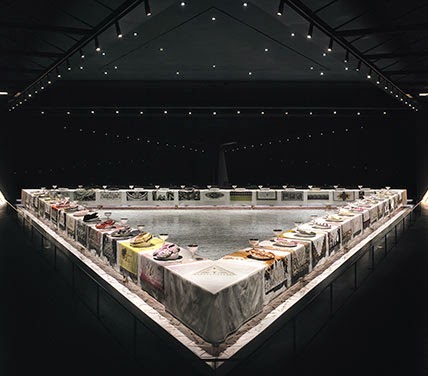"We have more up here...shall we say...than filmmakers think and I think that they need to look at themselves in the mirror...and think like, okay, what if it was me being represented in this part " -participant, Code of Freaks
This image is from an article on Bullying Among Youth with Disabilities from the NCHPAD Blog
As I watched the videos, read transcripts, and the articles in the section, this statement kept returning to my thoughts. It was along a similar line of thinking that I began my own journey of self reflection many years ago. One of the most memorable books I read as an adolescent was Flowers for Algernon. Reading this book, about a intellectually handicap man who is given an experimental drug that temporarily reverses his condition, was an enlightening moment for me, both in how I viewed and interacted with people who were different from me. (For those of you who have not read the book, as Charlie becomes smarter-his intellectual handicap was pretty severe-he realizes that all of the people who he thought were his friends, were in fact making fun of him, laughing at him. This is the moment that still weighs on me to this day.) My educational career began in elementary and special education with an emphasis on the arts and a specialty in autism (ABA therapy). Since then life has moved me all around and my career has shifted (somewhat dramatically) and, while I have always remained in the arts, I am finally moving along a path leading back to my initial training.
When reflecting on how I have enabled, empowered, or made possible the inclusion of difference, I think of my oldest child. While she has no disability, she is extremely sensitive to the people she comes in contact with, how they are different from her, how they are similar, and the explanations behind these inquiries. Children are naturally curious about other people; however, they are not naturally inclined to discriminate against those who are different from them. This behavior is modeled by those in their life and the over-arching cultural to which they are exposed. Channeling her observations of difference into a belief that "we are empowered through difference"(Keifer-Boyd, Empower notes), enables her to be a vessel for change. When my husband and I parent her, I feel that we have a responsibility to provide a positive appropriate example for interacting with all people. In doing so, we do not merely discuss people who are different from our family, we seek out and interact with people who are different in a multitude of ways. Dr. Carrie Sandahl discusses how she is "building [a] disability culture" (The American with Disabilities Act and the Arts: A Celebration of Inclusion. [Or Unreasonable Accommodations]) in her work. We are seeking to build an inclusive culture within our family that celebrates differences in race, sexual orientation, disability, etc.,. In doing so, we are teaching our children that we are one body with many parts that are all important and have much to contribute on a local and global level.
One of the ways in which we have enabled her is in the selection of her school. Her preschool program is heavily involved with the special needs program within the school (i.e. taking joint field trips, collaborating on projects together, etc). As a four year old she is "researching" and engaging in conversations with and about her friends with conditions such as hydrocephalus and cerebral palsy and who have different modes of transportation (i.e. walkers, wheel chairs). These constructive conversations are equipping her to openly and sincerely embrace those who are different from her. Two weekends ago, we were shopping and she encountered a lady in a wheel chair. With confidence, she walked up to the woman and struck up a conversation about her mode of transportation. For several minutes, the two discussed the wheel chair and its uses and why the lady needed it. Over the past few weeks, I have thought often of this encounter and wish I could have seen the situation from the perspective of the lady and/or my daughter. I am sure that this woman's experience shopping that day was not all pleasant and this inclusive. She wasn't not able to manipulate the wheel chair herself and relied upon her son to move her throughout the outdoor shopping area. In fact saw her several times as we shopped. However, I suspect that both parties shined a ray of sunshine into the lives of one another. Rather than turning to me to ask "what's wrong with her, mommy" my four-year old challenged the normal reaction to people who are physically different from her. Her reaction echoes Jon Novick's challenge in Don't Look Down on Me:
"I don’t want to tell anyone what to do or what to think or how to feel. But instead, what I’ll do is I’ll ask. I’ll ask that the next time you see someone who is different than you, think about what their day might be like. Think about all of the events of their life leading up to that point. Then think about their day, and think about what part of their day do you want to be."
My hope is that my child will always celebrate those around her for their inner and outer beauty (not perfection or normalcy). Just as Sandahl talks of disabilities as the real normal, we continue to question what is "normal" and what underlying cultural assumptions have crafted our existing belief system.
Resources:
2011 Illinois Arts Alliance presentation by Dr. Carrie Sandahl titled, The American with Disabilities Act and the Arts: A Celebration of Inclusion. [Or Unreasonable Accommodations]
Codes of the Freaks (18:09 min., 2011) at http://codeofthefreaks.blogspot.com/
Don't Look Down on Me athttps://www.youtube.com/watch?v=mD_PWU6K514 by Jonathan Novak (2014, 6:18 min.)

